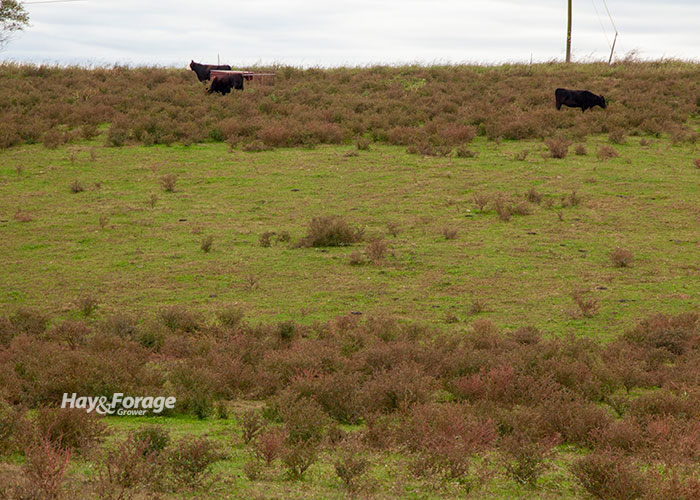Give pastures a break from grazing |
| By Amber Friedrichsen, Associate Editor |
|
|
 While optimists and pessimists argue about whether the glass is half empty or half full, both sides can agree that there is no water in the cup during a drought. These dry conditions can be detrimental to grazing systems, especially when slow plant growth leads to overgrazing. In a recent issue of the Off the Hoof newsletter, Kevin Laurent with the University of Kentucky says overgrazing can weaken forage stands and incite weed proliferation. Furthermore, a lack of forage may drive livestock to consume undesirable plant species. “What happens is we hammer our forage base into the ground, which not only increases recovery time, but also opens the canopy up for weeds,” the senior agricultural extension specialist explains. “Another potential problem in drought years is cattle are allowed to wander and scrounge for forage and may be tempted to consume noxious weeds they usually avoid, such as perilla mint.” One way to prevent overgrazing and safeguard stand persistence is to temporarily confine animals to a drylot. To demonstrate this, Laurent and other researchers from the University of Kentucky conducted a study that involved resting pastures in the fall to improve stockpiled forage yields. Drylot data In the experiment, spring calves were weaned in mid-September and grazed on cornstalks before entering a drylot where they were fed hay for 70 days. The hay was approximately 10% crude protein (CP) and 51% total digestible nutrients (TDN), and animals gained an average of 135 pounds. Cattle transitioned to grazing stockpiled tall fescue in mid-December. This forage was about 14% CP and 62% TDN, and no hay or other supplements were fed at this time. Animals maintained body condition scores between 5.2 and 5.5 until calving began in early March, and the study ended when spring grazing began in early April. Laurent notes the herd received about half as much hay throughout the experiment compared to years prior. This suggests feeding cattle hay before stockpiling tall fescue bolstered pasture recovery and plant regrowth, and in turn, extended the grazing window. “This strategy may not be for everyone, and every year is different in terms of weather and rainfall,” Laurent says. “However, it may be a strategy worth considering to feed lower maintenance dry cows, along with resting our pastures for fall growth and subsequent grazing.” If a drylot is not available, livestock can also be fed hay in a sacrifice area. “Feeding hay in a more limited area will not only allow the remainder of the farm to rest and recover when rainfall occurs, but it may give you an opportunity to fertilize a poorer paddock or pasture,” Laurent states. “Eighty percent of what a cow eats comes out the other end, so hay feeding or bale grazing across poor pasture during drought conditions could be a win-win in terms of nutrient recycling.”  Amber Friedrichsen Amber Friedrichsen is the 2022 Hay & Forage Grower editorial intern. She currently attends Iowa State University where she is majoring in agriculture and life sciences education-communications and agronomy. Friedrichsen grew up on her family’s diversified crop and livestock farm near Clinton, Iowa. |
